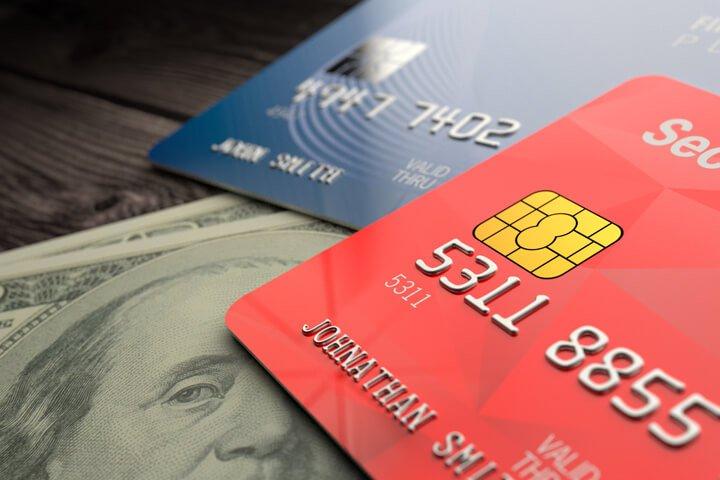Hey there, financial warriors! Are you feeling the weight of debt like it’s a ton of bricks on your shoulders? If you’re nodding your head right now, you’re definitely not alone. Many of us have been there, staring at those ever-growing numbers and wondering just how to make them shrink. But don’t worry! There are smart, efficient, and surprisingly simple strategies that can help you manage and eliminate your debt. Whether it’s student loans, credit card balances, or a car loan, tackling debt doesn’t have to feel like an uphill battle. So grab a comfy chair, maybe a cup of coffee, and let’s dive into some practical tips that can set you on the path to financial freedom!
Understanding Your Debt Landscape
Before diving into strategies, it’s crucial to know what kind of debt you have. Whether it’s credit card debt, student loans, mortgages, or personal loans, each type has its own quirks and interest rates. By categorizing your debts, you’ll gain a clear picture of what you’re up against.
Here are a few steps to get started:
- List all your debts: Take note of the total amount, interest rates, and monthly payments.
- Prioritize debts: Focus on high-interest debts first as they can cost you more over time.
- Check for consolidation options: Sometimes consolidating your debts can make them more manageable.
| Type of Debt | Interest Rate | Monthly Payment |
|---|---|---|
| Credit Card | 15% | $200 |
| Student Loan | 5% | $300 |
| Mortgage | 3% | $1,000 |
Seeing all this information laid out can help you make informed decisions and set up a plan that works for you. Remember, understanding your starting point is the first step towards an effective debt payoff journey!

Creating a Realistic Budget
One of the first steps to managing debt is setting up a realistic budget. Start by listing your monthly income and all your expenses. Make sure to include everything from rent and utilities to coffee runs and subscription services. Once you’ve got everything down, categorize your expenses into needs and wants. This will help you identify areas where you can cut back. Here are some common categories you might consider:
- Housing: Rent, utilities, maintenance
- Transportation: Car payments, gas, public transit
- Food: Groceries, dining out
- Entertainment: Streaming services, hobbies
- Debt Repayment: Credit cards, student loans
Creating a budget isn’t just about listing expenses. It’s about finding a balance that allows room for unexpected costs without plunging you into more debt. Make use of budgeting apps or a simple spreadsheet to keep track of your progress. Remember, the goal is to spend less than you earn. For better clarity, you can set up a table to prioritize your expenses:
| Category | Monthly Budget |
|---|---|
| Housing | $1,200 |
| Transportation | $300 |
| Food | $400 |
| Entertainment | $100 |
| Debt Repayment | $500 |

Snowball vs. Avalanche: Choosing Your Debt Repayment Strategy
When tackling debt, you may wonder whether to choose the Snowball method or the Avalanche method. Each has its own unique way of helping you knock down those balances. With the Snowball method, you focus on paying off your smallest debts first, regardless of interest rates. This can give you quick wins and a boost of motivation to keep going. On the other hand, the Avalanche method targets debts with the highest interest rates first, saving you more money on interest over time.
To make your decision easier, here’s a quick comparison:
- Snowball Method: Quick wins, motivational boosts, simple and easy to follow
- Avalanche Method: Saves more on interest, may take longer to see gains, more cost-effective in the long run
| Method | Pros | Cons |
|---|---|---|
| Snowball | Quick wins, motivation | Potentially higher interest costs |
| Avalanche | Less interest paid over time | Longer to see progress |
Consider what’s more important to you: immediate motivation or long-term savings. Both methods can be effective; the best choice depends on your personal preferences and financial goals.

Maximizing Extra Income to Speed Up Debt Payments
One of the quickest ways to tackle debt head-on is by generating additional income streams. Here are a few approaches to consider:
- Side hustles: Pursue freelance opportunities, such as writing, graphic design, or tutoring.
- Gig economy: Look into driving for ride-share services, delivering food, or participating in other on-demand tasks.
- Part-time work: Consider picking up a part-time job that fits around your regular schedule.
- Sell unused items: Declutter your home and sell things you no longer need on platforms like eBay or Craigslist.
To make the most of your extra income, it’s essential to channel it directly towards your debt. This can be done effectively by setting clear financial goals and prioritizing higher-interest debts first. Below is a simple example of how you might allocate extra income:
| Extra Income | Purpose |
|---|---|
| $100 | Put towards the credit card with the highest interest rate |
| $50 | Save for the monthly loan payment |
| $30 | Emergency savings |
Q&A
Q: What’s the first step I should take if I want to start paying down my debt?
A: Great question! First things first, you’ve got to know exactly what you’re working with. Gather all your statements and make a list of each debt you owe, the interest rates, and the minimum payments. This will give you a clear picture of your current situation. Once you know where you stand, you can start crafting a plan to tackle that debt head-on.
Q: How do I prioritize which debts to pay off first?
A: There are a couple of popular strategies here: the Debt Avalanche and the Debt Snowball methods. With the Debt Avalanche, you pay off the debt with the highest interest rate first, which saves you more money on interest in the long run. On the other hand, the Debt Snowball prioritizes the smallest debt first for a quick win, get those motivational juices flowing, and then you roll that payment into the next smallest debt, and so on. It really comes down to what motivates you more – saving money or seeing quick progress.
Q: What if I can’t afford more than the minimum payments right now?
A: Totally understandable – and you’re not alone in that. The key here is to still make those minimum payments on time to avoid late fees and extra interest. Meanwhile, look for ways to free up some cash. Could you cut back on non-essentials, pick up a side gig, or sell some stuff you don’t need anymore? Every little bit helps. Once you’ve got any extra cash, put it towards your debt.
Q: Are balance transfers a good idea for paying off debt?
A: They can be! Balance transfers typically offer low or zero percent interest for an introductory period, which can help you save a lot on interest. The trick is to pay off the transferred balance before the rate goes up. Also, watch out for transfer fees and make sure the new card’s regular interest rate is better than what you’re currently dealing with. Otherwise, it might not be worth the hassle.
Q: Should I consider debt consolidation?
A: Debt consolidation can be a great tool for managing multiple debts. It rolls all your high-interest debts into one, ideally with a lower interest rate, so you just have one monthly payment to worry about. It can simplify things and possibly save you money, but be cautious about fees and make sure you’re not just moving your debt around without making a dent in it.
Q: What about working with a credit counselor?
A: Credit counselors can be really helpful, especially if you’re feeling overwhelmed. They can help you create a budget, negotiate with creditors, and sometimes even get your interest rates reduced. Just make sure to choose a reputable, non-profit agency. There are scams out there, and you don’t want to end up in a worse situation.
Q: Is it ever okay to take out a loan to pay off debt?
A: It can be, depending on the terms of the loan. Personal loans might offer lower interest rates compared to credit cards, making it cheaper debt. But, do the math and factor in any fees. And remember, taking out a loan doesn’t make your debt vanish – it just changes who you owe. So, stick to a solid repayment plan to get ahead.
Q: Any quick tips for staying motivated?
A: Absolutely! Set small, achievable goals and celebrate your progress. Maybe treat yourself when you pay off a certain amount. Surround yourself with supportive friends or family, and remember why you’re doing this – financial freedom feels AMAZING. And hey, you’ve got this!
Q: Any last pieces of advice?
A: Just keep at it and be patient. Paying down debt is a marathon, not a sprint. Tracking your progress and staying consistent will eventually get you to the finish line. And don’t forget to reward yourself along the way for each milestone you hit. Good luck!
Closing Remarks
And there you have it! Tackling debt might feel like climbing a mountain, but remember, every step you take brings you closer to the summit. By sticking to these strategies—whether it’s creating a budget, prioritizing high-interest debt first, or simply finding ways to boost your income—you’re paving the way to financial freedom.
Sure, it’s going to require some commitment and maybe even a bit of elbow grease, but think about how amazing it will feel to be debt-free. Imagine the weight lifted off your shoulders! You’ve got this.
So, why not start now? Go ahead, grab that cup of coffee, sit down with your finances, and take that first step. You’re on your way to a brighter, debt-free future. And remember, every small move counts. We’re rooting for you!


